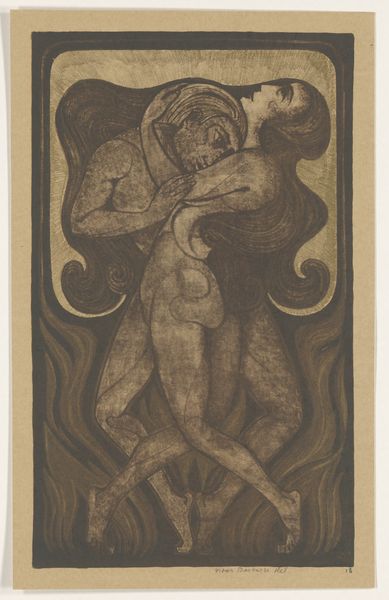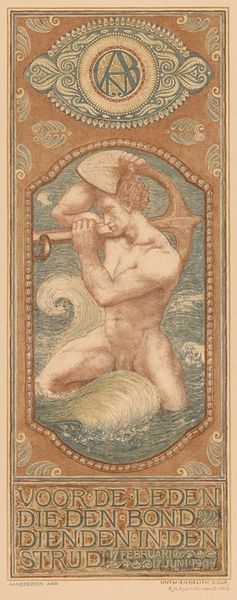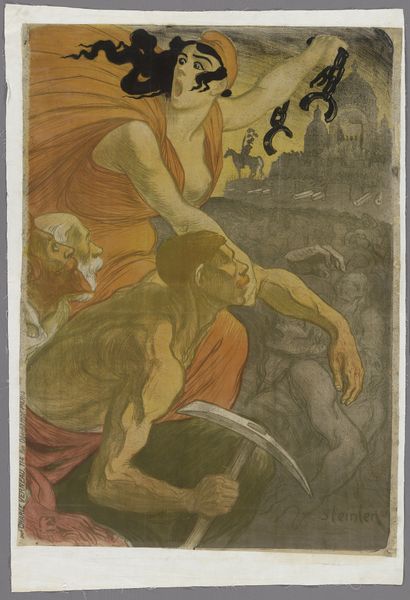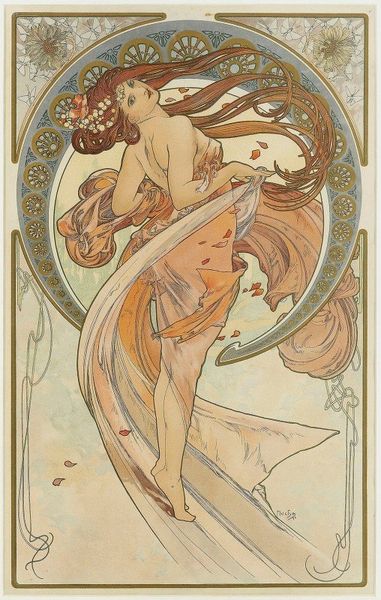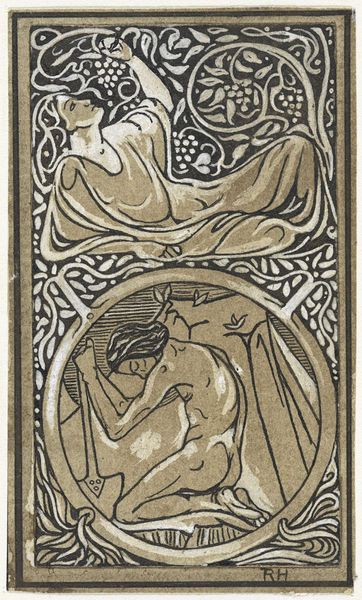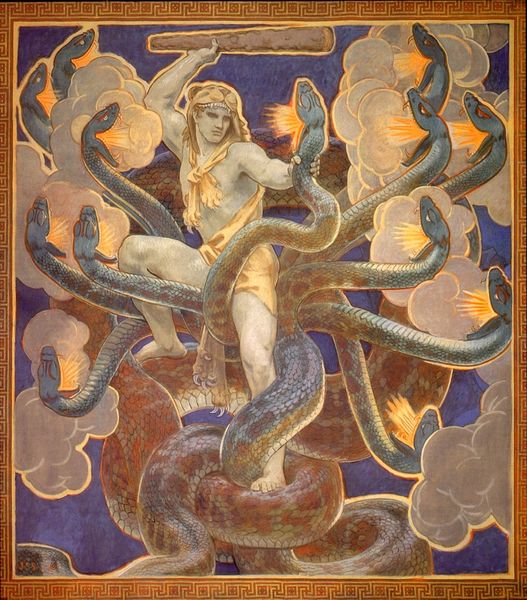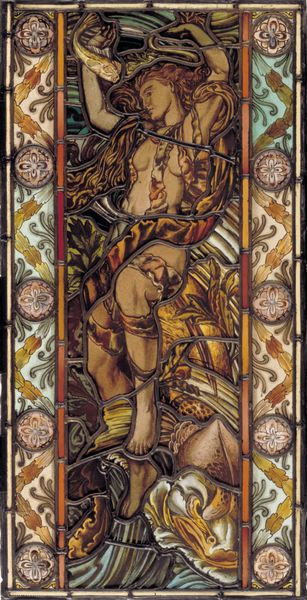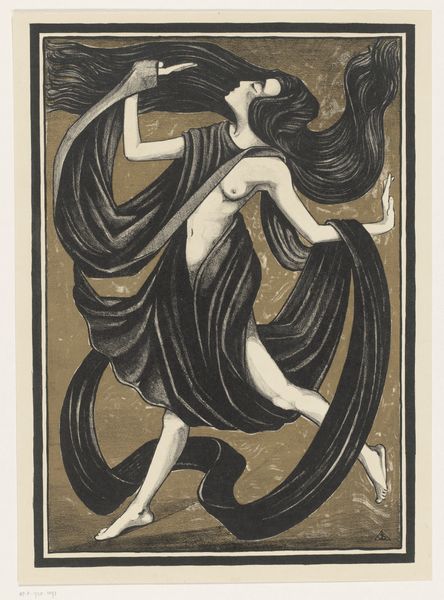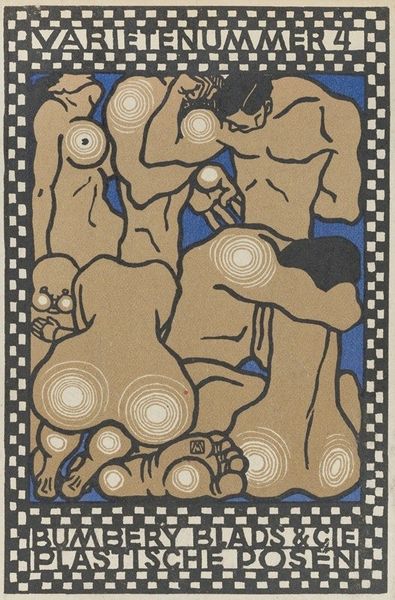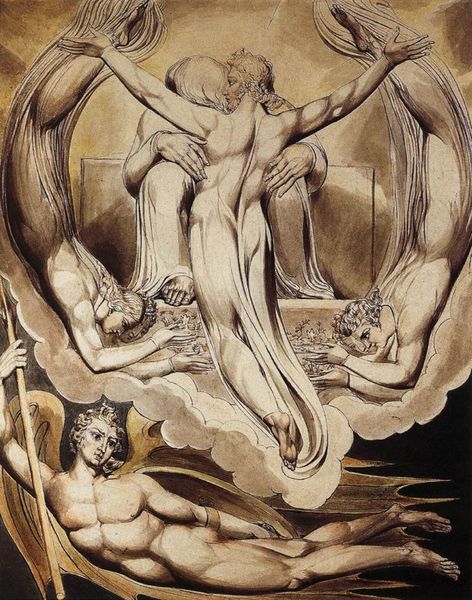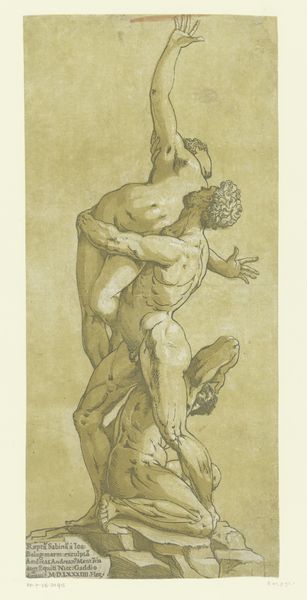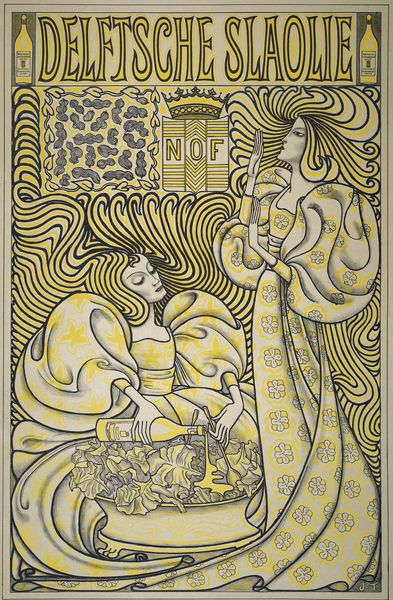
Internationale Gastentoonstelling in Amsterdam, 14 sept - 6 oct. 1912 in Paleis voor Volksvlijt 1912
0:00
0:00
jacjongert
Rijksmuseum
graphic-art, poster
#
portrait
#
graphic-art
#
art-nouveau
#
caricature
#
figuration
#
symbolism
#
poster
Dimensions: height mm, width mm
Copyright: Rijks Museum: Open Domain
Curator: This vibrant poster, created by Jac Jongert in 1912, announces the Internationale Gastentoonstelling in Amsterdam, held at the Paleis voor Volksvlijt. Editor: It’s arresting! The earth-toned figures emerge from a deep black background, the strong lines of the Art Nouveau frame giving the piece a remarkable intensity. Is that supposed to be the sun they’re holding? Curator: Symbolically, it certainly suggests enlightenment. The man carries a child, seemingly aloft in a gilded vessel. The poster would have functioned as public art, shaping the cultural landscape and attracting visitors to the exhibition. Consider where it might have been placed, and the politics inherent in selecting this imagery to represent international art. Editor: Right. And printed en masse for public consumption; the mechanization of image-making shaping the material culture of Amsterdam! Look at the patterns and repetition here - not the work of a solitary genius, but a product of design and industrial production. And it highlights the growing importance of consumer culture. Curator: Indeed, and what’s also interesting to note is that “Volksvlijt,” which translates to “people's industry,” reveals the intent to democratize access to art and culture. How do you feel Jongert’s poster speaks to the societal shifts of the era? Editor: It's fascinating, this merging of classical and modern. The figures recall a timeless allegory but are rendered in a contemporary style that surely spoke to a modern audience. But there is something uncomfortable, the sort of rough drawing of muscles…is it meant to speak to labor? Or virility? I am intrigued by this piece and I am pleased you shared your curatorial perspective on the historical implications. Curator: It's crucial to appreciate this image as more than just advertising material. We can examine what this imagery conveyed to its original audience in 1912, considering the prevalent symbolism and societal ideals. Editor: A superb point - seeing past what the art overtly means into what the design reveals. It does encourage another visit!
Comments
No comments
Be the first to comment and join the conversation on the ultimate creative platform.

